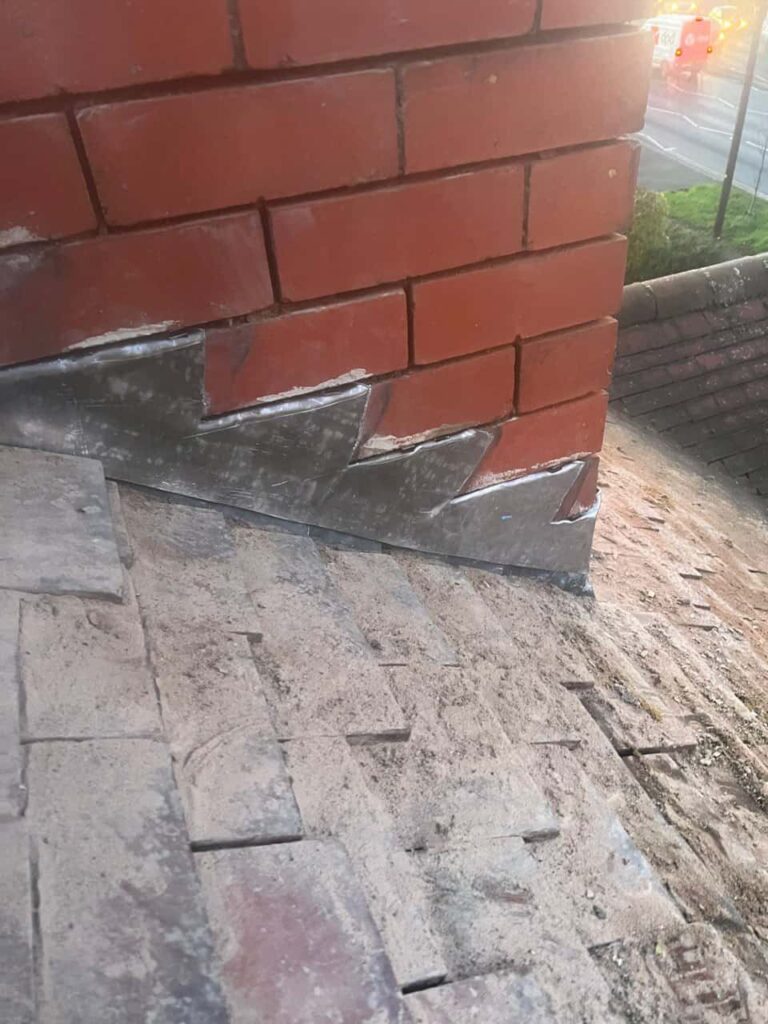A stain on your ceiling can be a cause for concern, especially if it appears suddenly. It might be tempting to think of it as a minor issue, but in many cases, ceiling stains can be a sign of a roof problem. If you’ve noticed a discolouration or water marks on your ceiling, it’s important to address the issue promptly before it leads to bigger, more expensive problems.
In this blog post, we will explore what causes ceiling stains, how to identify if your roof is the problem, and what steps you should take next.
Common Causes of Ceiling Stains
Before assuming that your roof is the culprit, it’s essential to understand that there are various reasons for ceiling stains. Some of the most common causes include:
1. Roof Leaks
The most common cause of a ceiling stain is a leak in your roof. When water seeps through damaged or missing roofing materials, it can travel along beams and joists, eventually pooling in your ceiling. Over time, this water can cause stains, often seen as dark patches or watermarks.
2. Condensation
In some cases, condensation on the underside of your roof can cause stains, especially in poorly ventilated areas. When warm, moist air meets cold surfaces in the attic, it can cause water droplets to form and drip onto the ceiling below, leading to discolouration.
3. Plumbing Issues
Sometimes, the source of the stain may not be related to the roof at all. Plumbing problems, such as a leaky pipe in your walls or attic, can cause water to leak into your ceiling, leading to stains that resemble roof damage.
4. Leaking Windows
In some instances, windows that are poorly sealed can allow rainwater to leak into your home, which may drip onto your ceiling and cause stains. This is less common than roof leaks but still worth considering.
How to Determine if Your Roof Is the Problem
If you suspect your ceiling stain is due to a roof issue, there are a few steps you can take to investigate further:
1. Inspect Your Attic
The first step in determining if your roof is the source of the problem is to check your attic. Look for visible signs of water damage, such as damp insulation, wet beams, or pooled water. If you can pinpoint where the water is coming from, this is a good indication that your roof is the culprit.
2. Check for Missing or Damaged Roof Tiles/Shingles
Examine the outside of your roof for visible signs of damage. Missing, cracked, or curled tiles or shingles can be a clear sign of a leak. If you find any damage, it’s essential to address it as soon as possible to prevent further water intrusion.
3. Look for Other Signs of Roof Damage
In addition to missing tiles or shingles, other signs of roof damage include sagging rooflines, holes, or granule loss from asphalt shingles. These issues can compromise your roof’s ability to keep water out and may lead to ceiling stains.
4. Assess the Condition of Your Flashing
The flashing around chimneys, vents, and skylights is particularly vulnerable to wear and tear. If flashing becomes loose or cracked, it can allow water to enter your home. Inspecting the flashing for damage is a good way to determine if it could be contributing to the leak.
What to Do Next: Steps to Take
Once you’ve determined that your roof may be the source of the ceiling stain, it’s crucial to take prompt action to prevent further damage.
1. Contact a Professional Roofing Company
While it’s possible to spot some issues with your roof, determining the full extent of the damage often requires the expertise of a professional roofer. At Cannock Roofing Repairs, we have the knowledge and tools to assess your roof’s condition thoroughly and recommend the best course of action.
2. Get a Roof Inspection
A full roof inspection will allow a professional to identify leaks, damaged shingles, and other issues that could be contributing to the problem. We offer expert roof inspections to ensure that no issue goes unnoticed, preventing more significant damage down the line.
3. Repair the Roof
If your roof is the source of the problem, timely repairs are necessary. The longer you wait, the more extensive the damage may become, potentially leading to structural issues and expensive repairs. Our roofing team can quickly address any leaks, replace missing shingles, and ensure your roof is watertight again.
4. Address Any Other Issues
If the source of the stain is something other than the roof, such as plumbing or condensation, it’s important to have those issues fixed as well. Our experts can help you identify whether the issue is related to your roof or if there are other underlying problems contributing to the damage.
Conclusion
A ceiling stain should never be ignored, as it could indicate a more serious roof issue. If you’ve noticed a stain on your ceiling, it’s important to take action quickly to determine whether your roof is the cause. Regular roof inspections, especially after storms or noticeable damage, can prevent leaks from becoming larger problems.
If you suspect your roof is the source of the stain, don’t hesitate to contact Cannock Roofing Repairs. Our professional team can assess the situation, recommend repairs, and ensure your roof remains in top condition for years to come. Reach out to us today to schedule a roof inspection and protect your home from further damage.
Call us on: 01543 220 998
Click here to find out more about Cannock Roofing Repairs
Click here to complete our contact form and see how we can help with your roofing needs.

